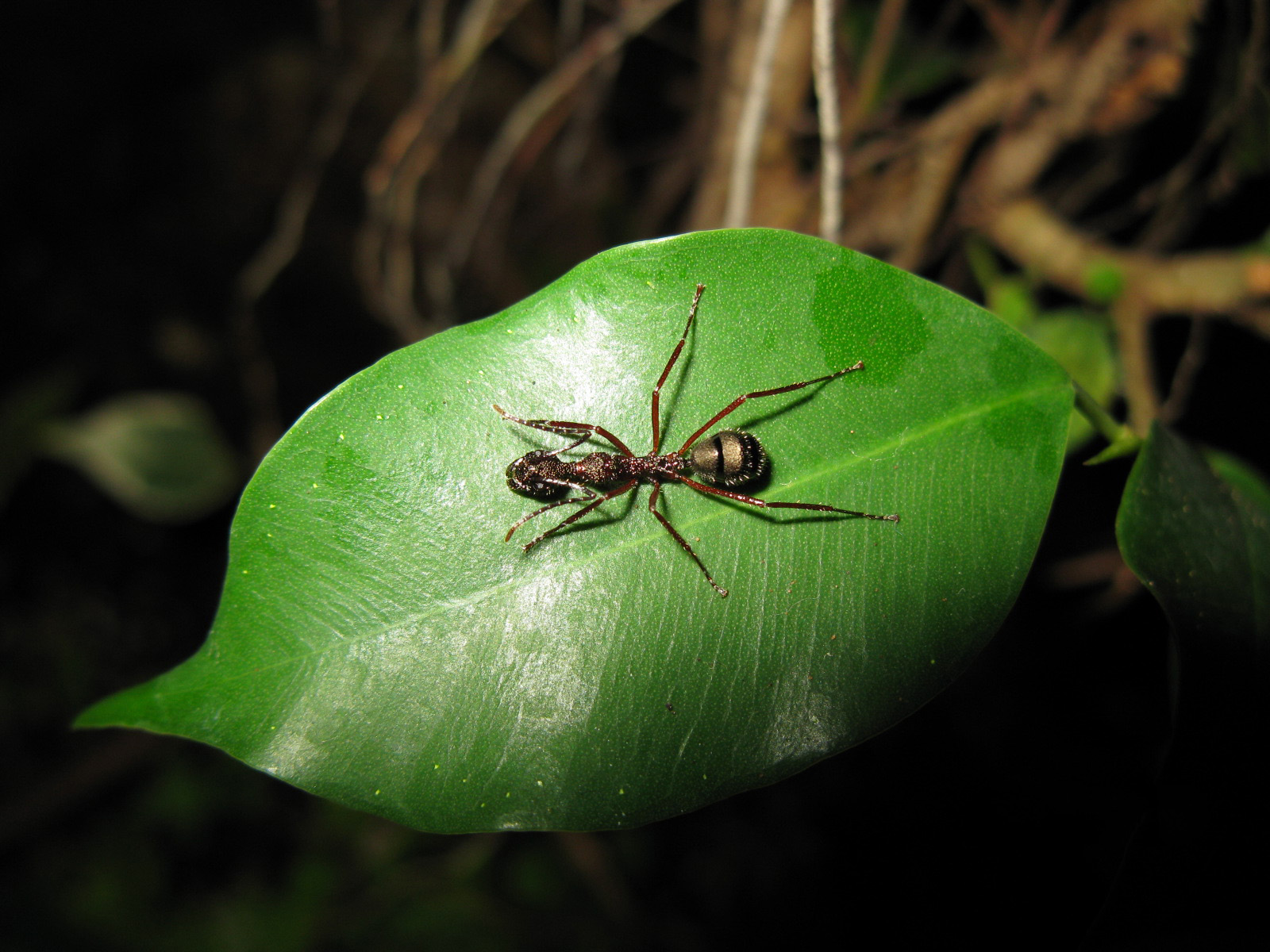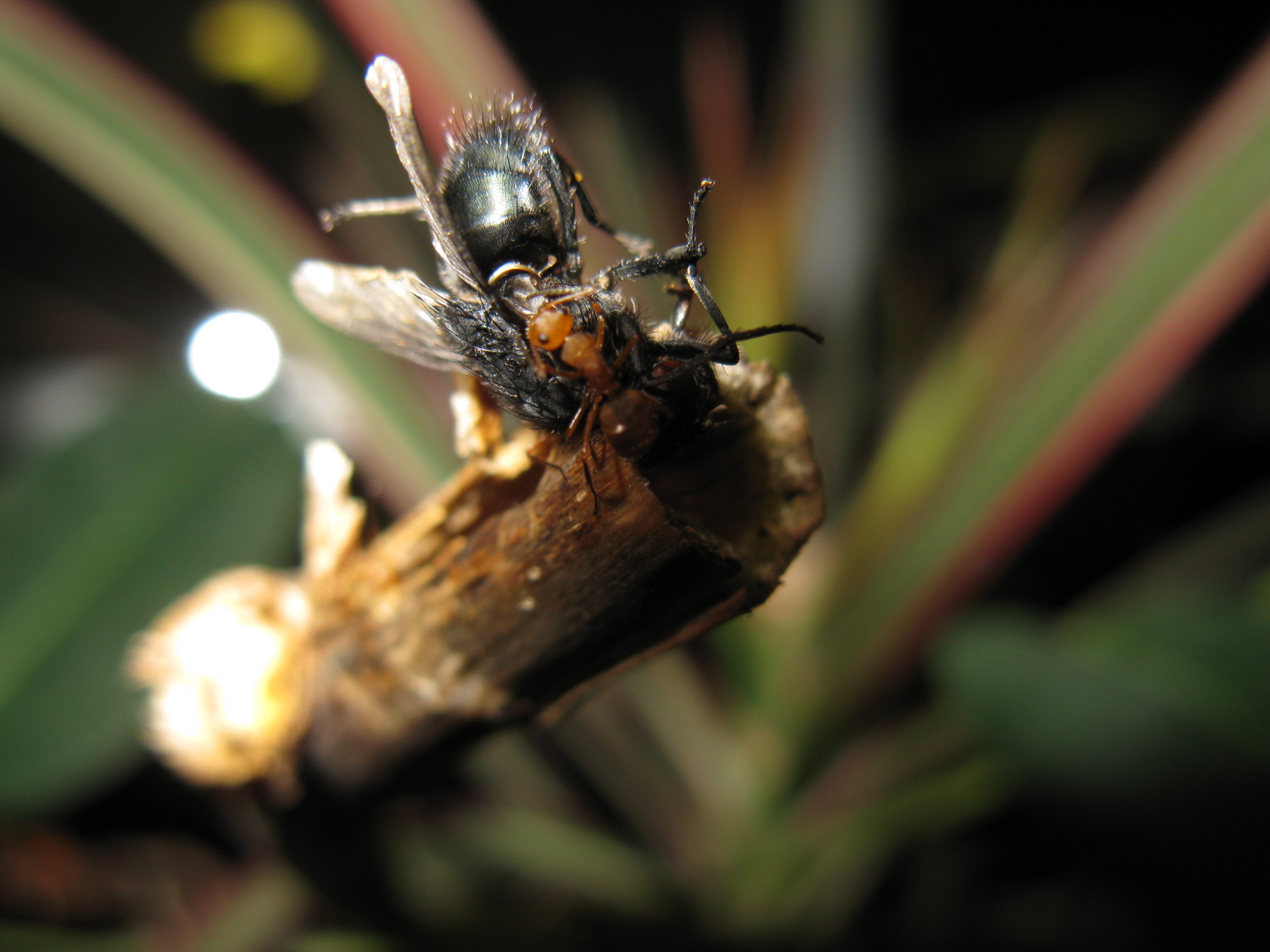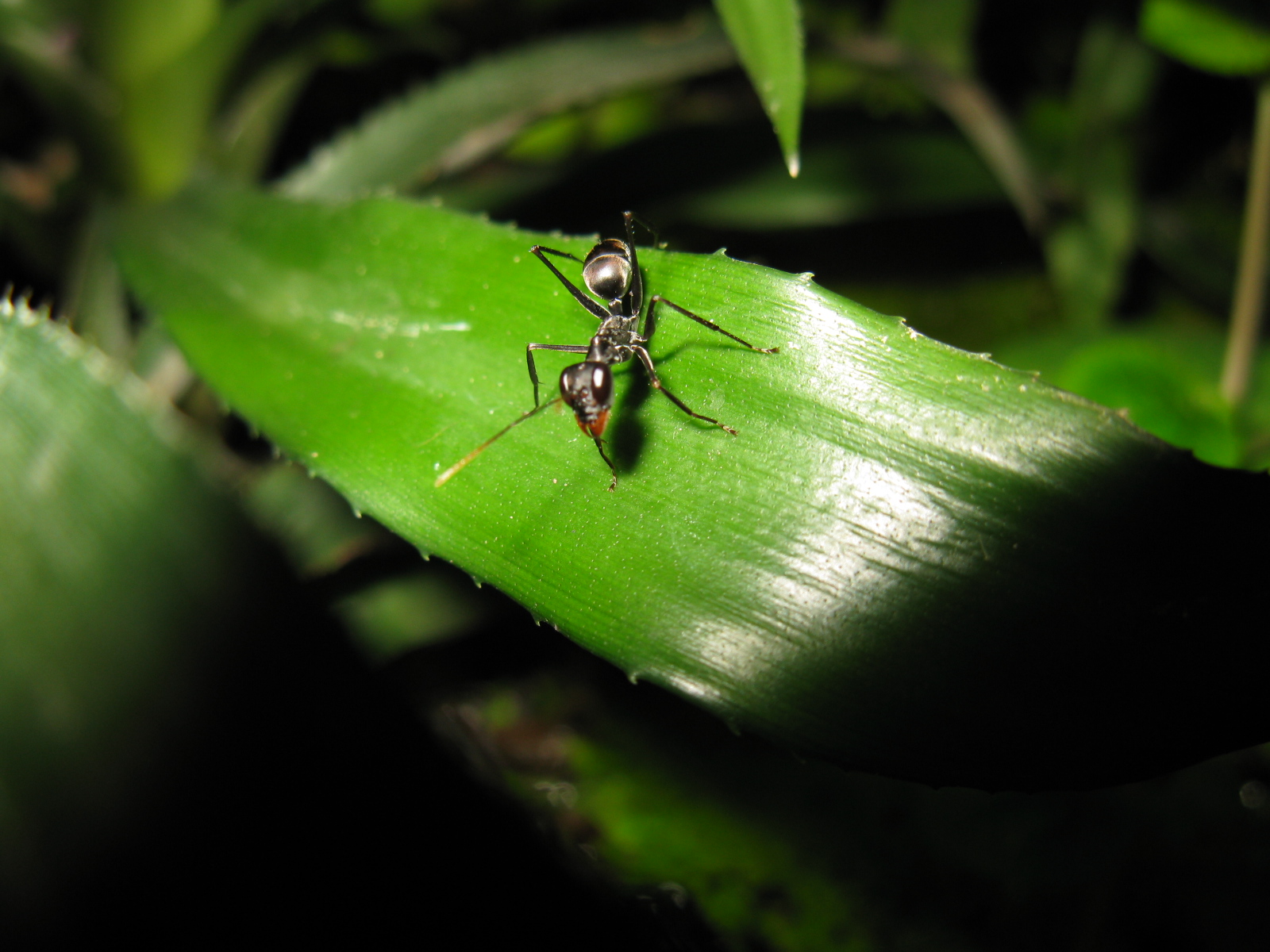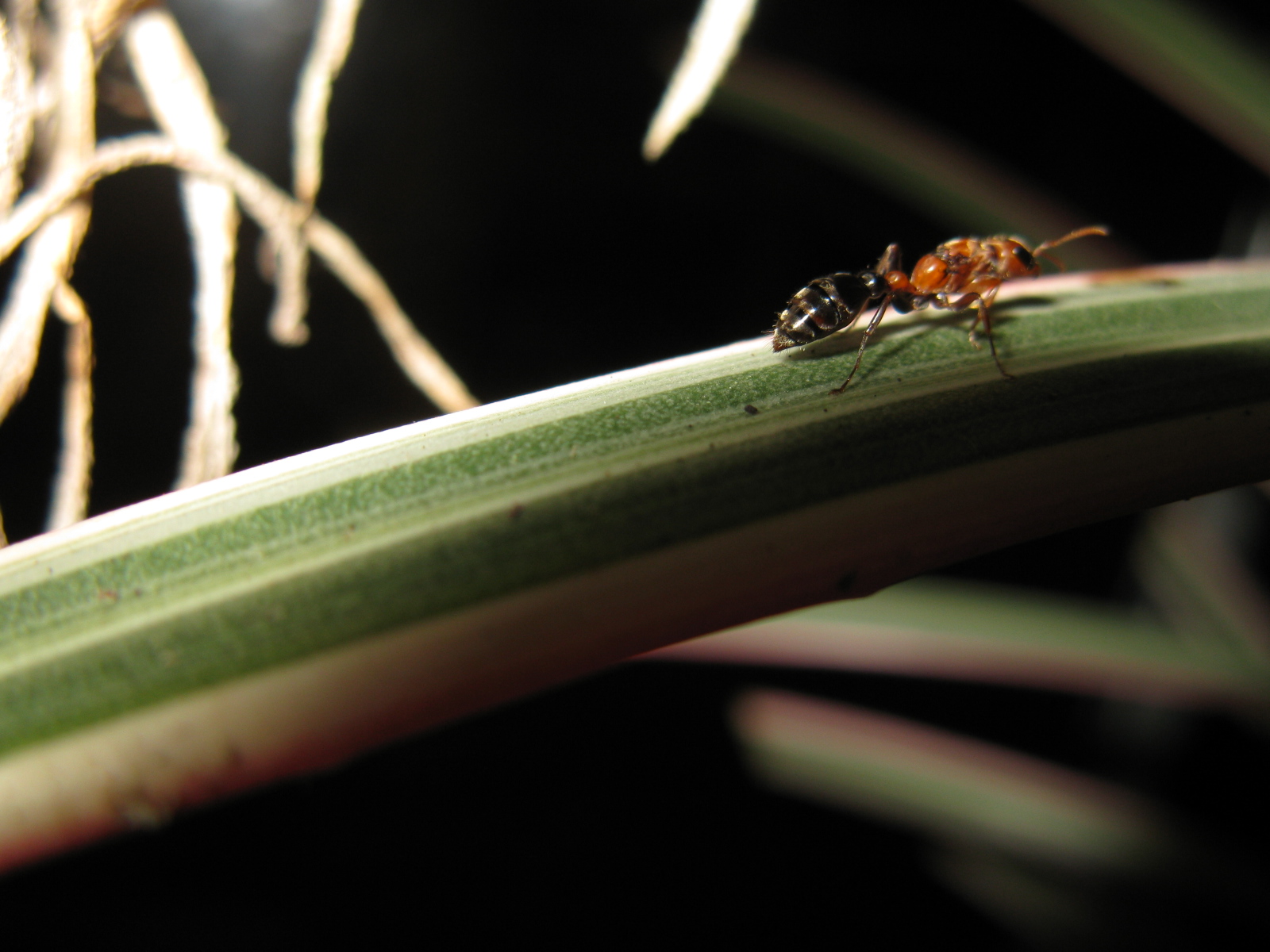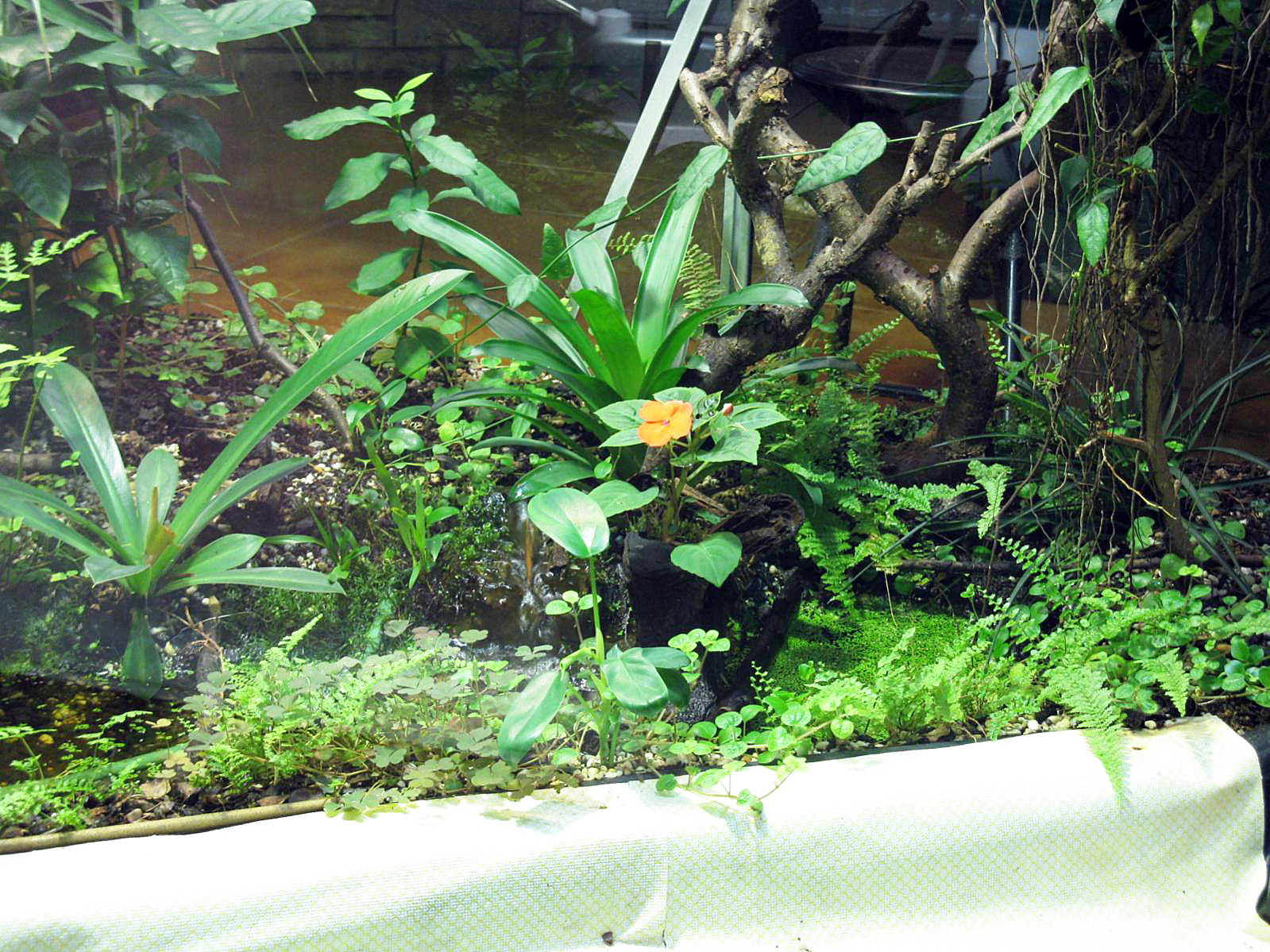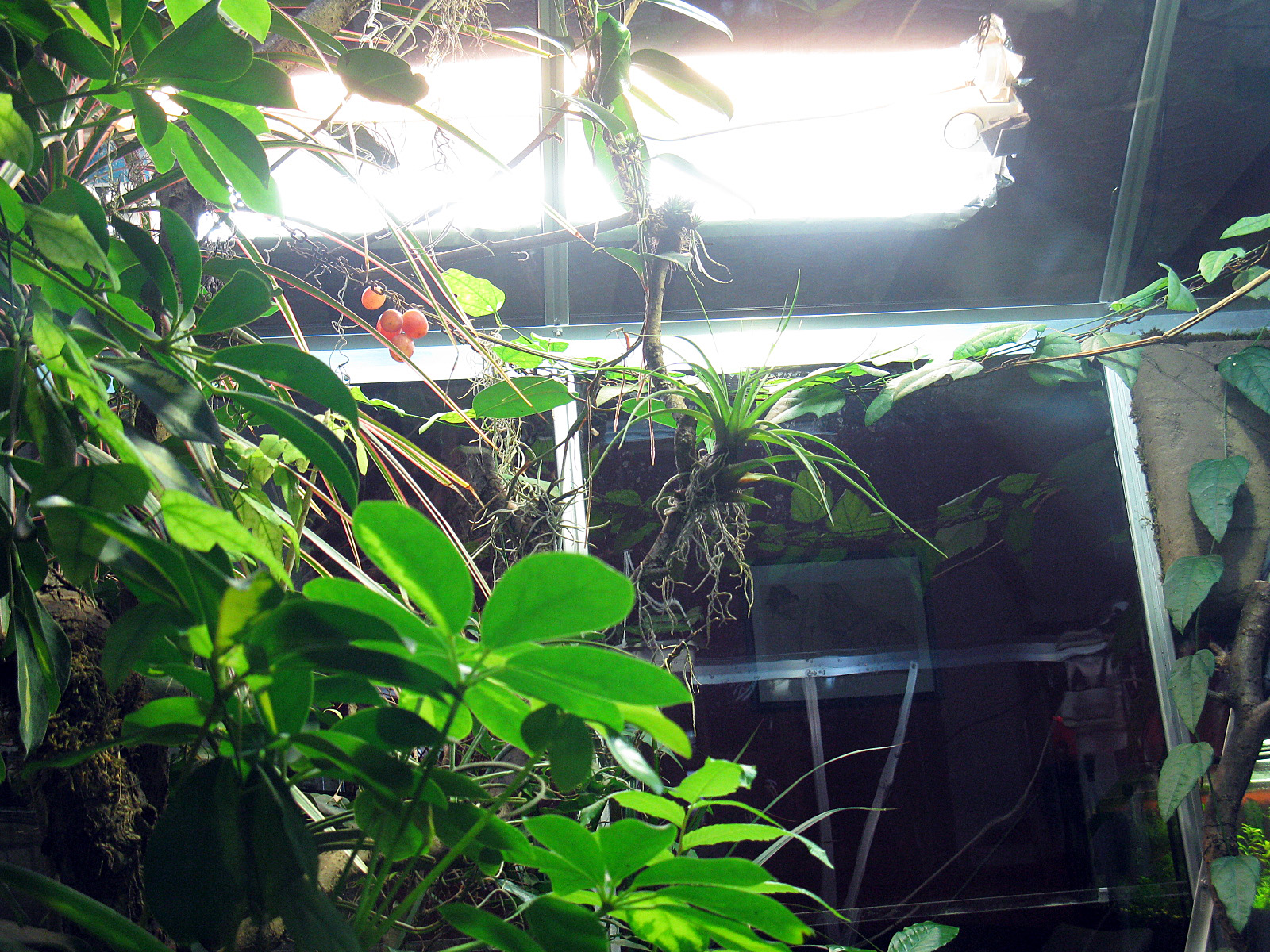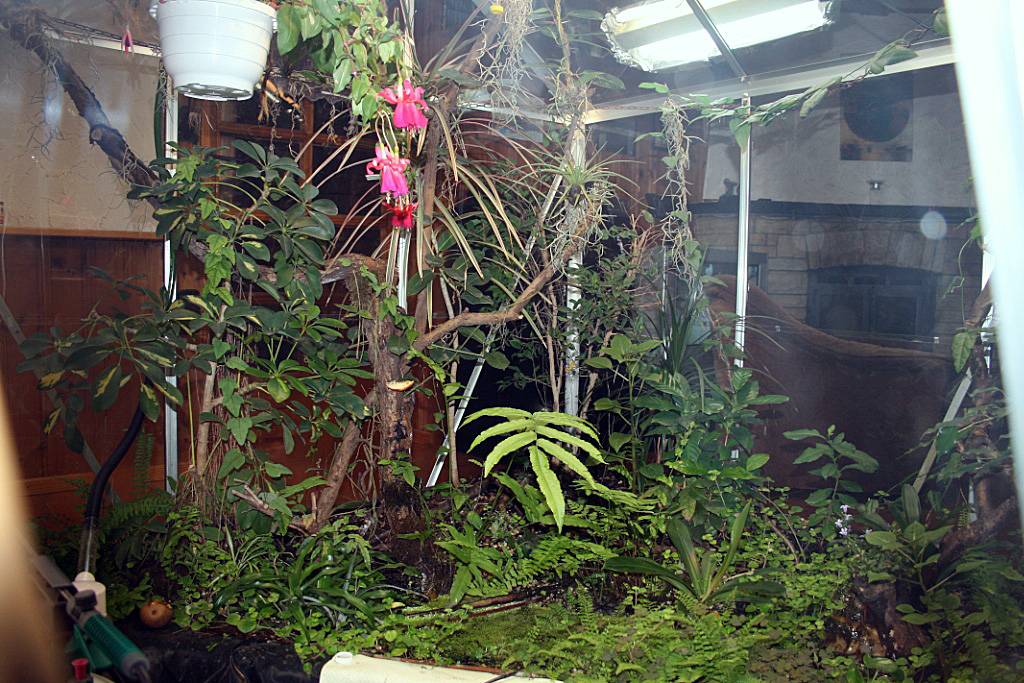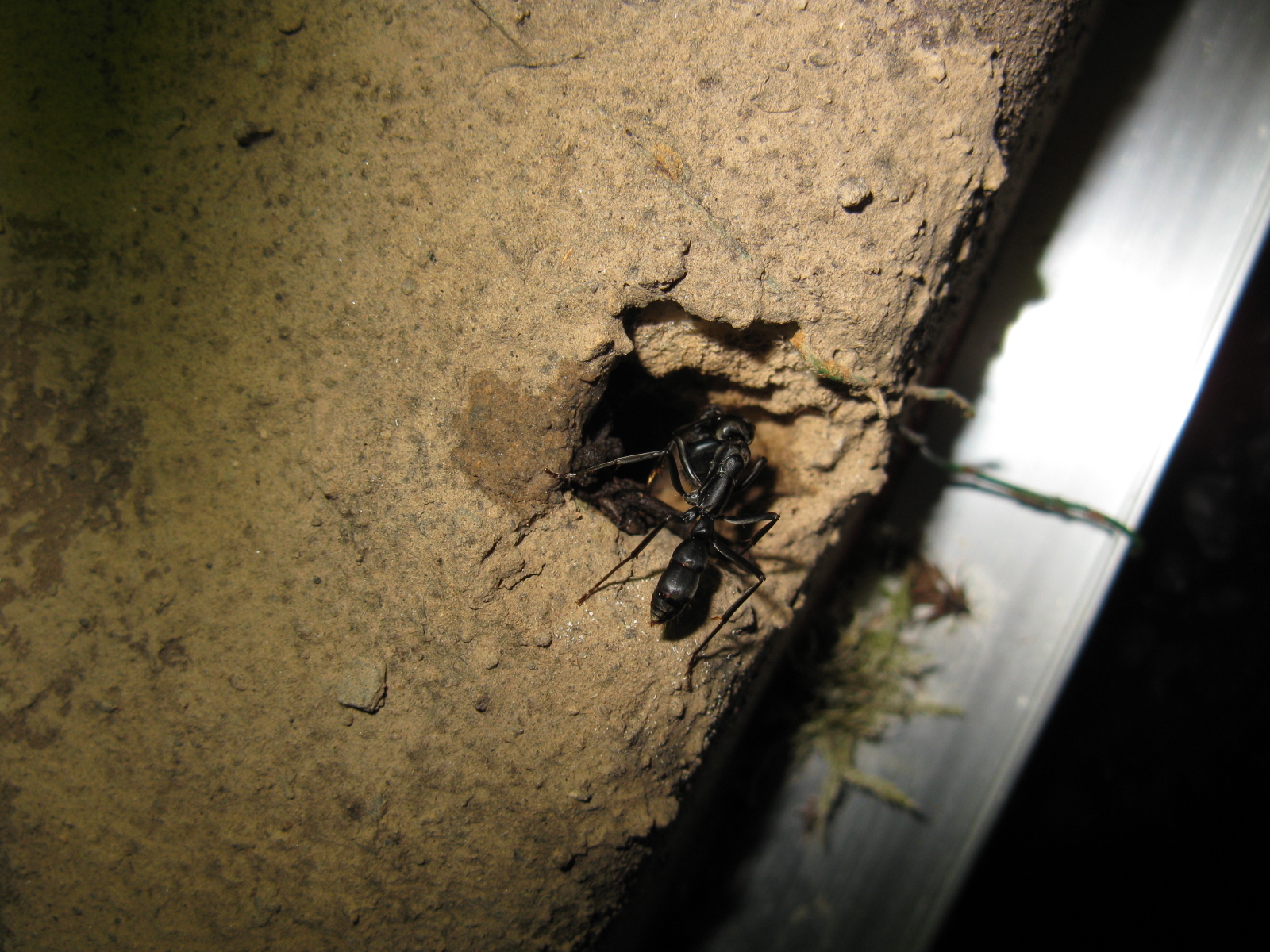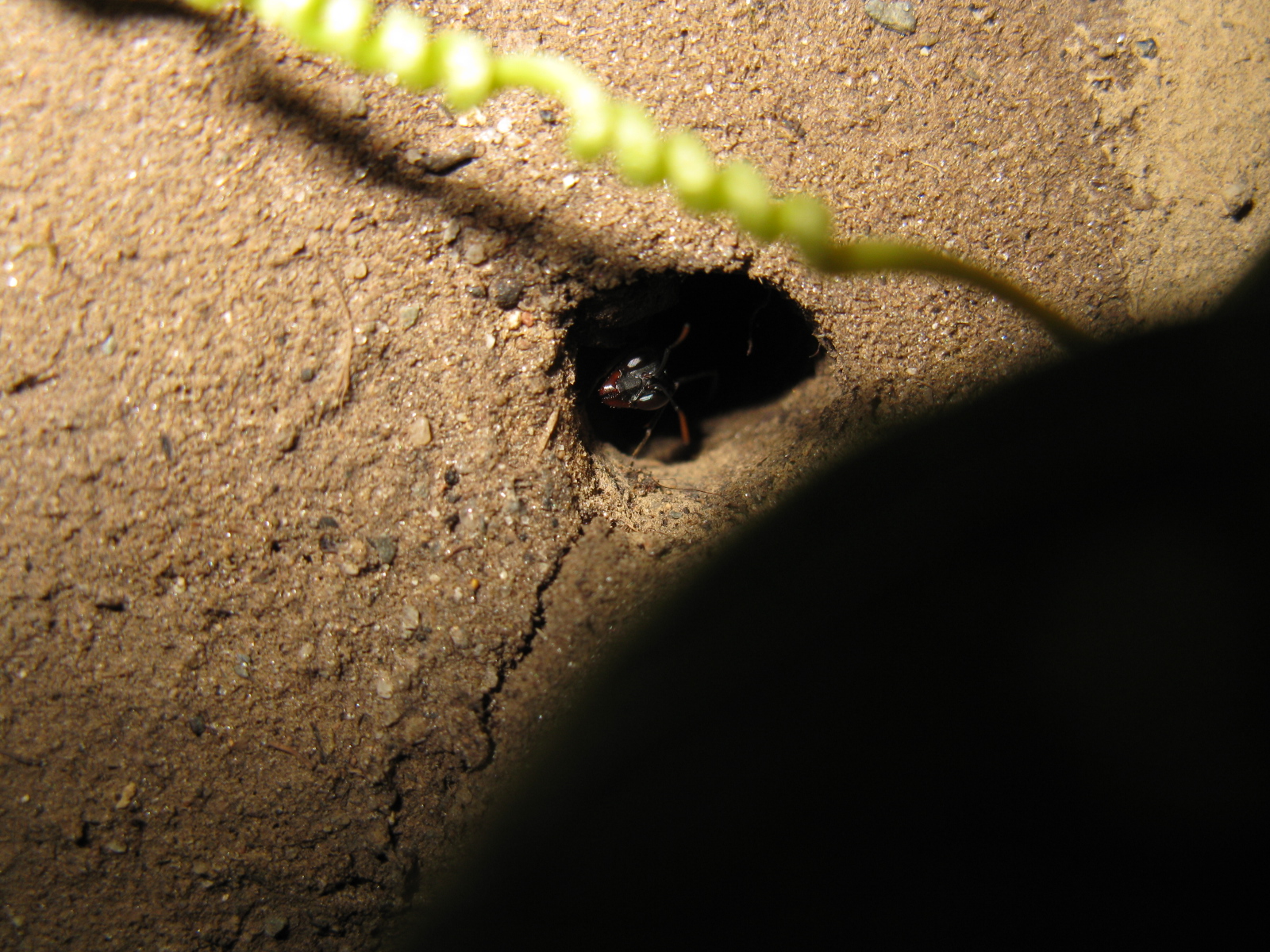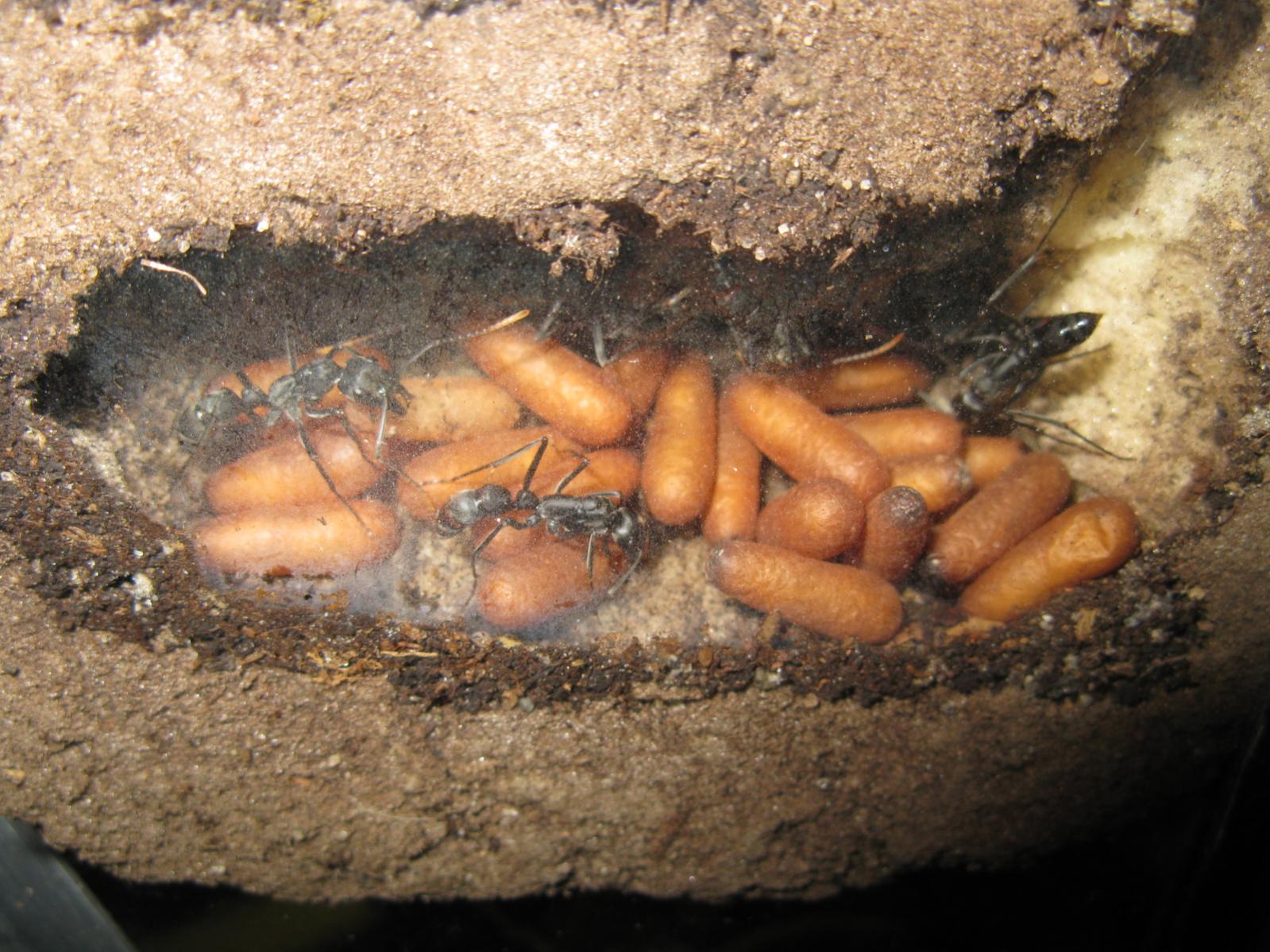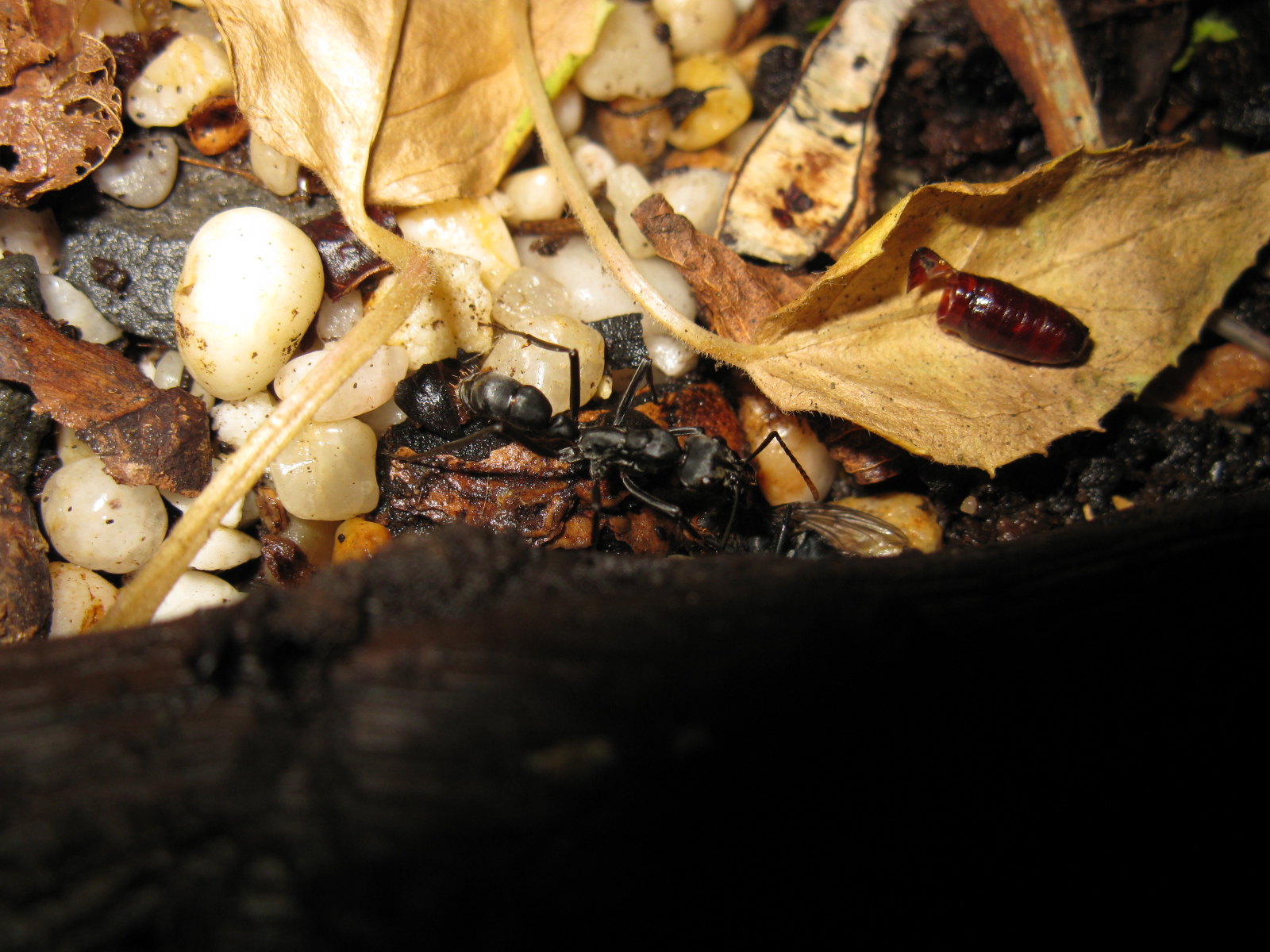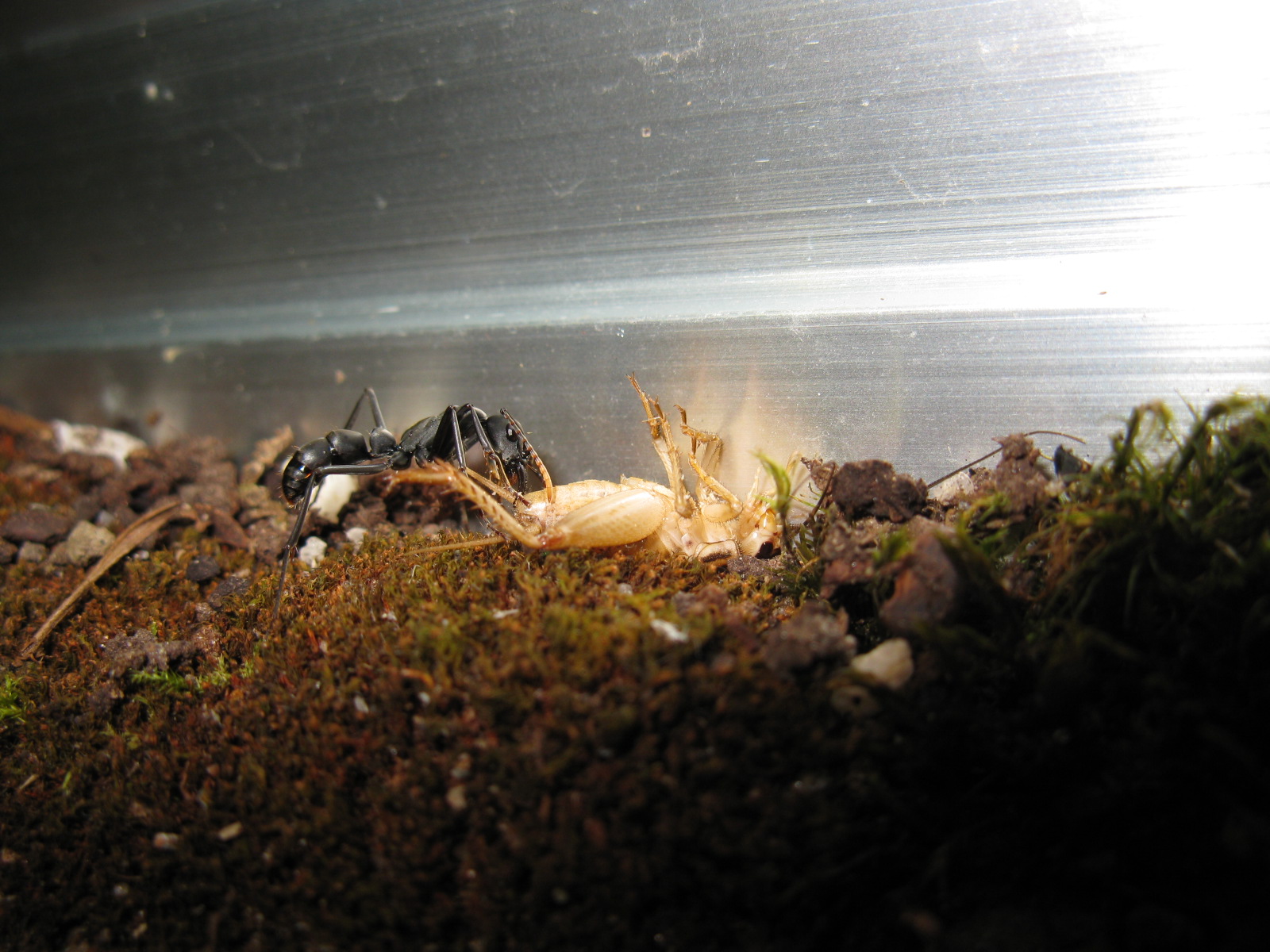Formicarium of the 3/4
For the second installment of Formicarium of the 1/4 we are featuring Frank Mattheis biosphere formicarium from Germany. We were unfortunately unable to get in contact with Mattheis and have translated as best we can the following information regarding his planted biosphere community formicarium.
Mattheis uses a small greenhouse as the home for his ants and it serves as the formicarium and outworld. It is 2m x 2m wide as well as 2m high.
It is a community formicarium and houses several species of ants but features the beautiful Gigantiops destructor and Pachycondyla apicalis. Also living in the formicarium is an arboreal Crematogaster species, a Dolichoderus species that lives in a nest constructed in a ficus tree inside the outworld, and a smaller arboreal Turkish Camponotus ant. The last ant that he's added to his collection is a Pseudomyrmecinae sp.
Most of the ants are non aggressive and only the Dolichoderus engage in territorial disputes as they vehemently try to defend its Passionflower, described below.
The formicarium is home to many different plants and mosses such as Tillandsia, Bromeliads, and native Orchids. Lots of ferns are housed in the outworld and have since grown to over a metre tall. Mattheis is required to cut the ferns back from time to time.
Ficus Benjamina or weeping figs are also present and when flowering create a great food source for the ants. He’s also planted grapes for a sugary treat. Passionflowers grow in many places and form long tendrils. Again plenty of nectar is produced inside for the ants.
Along the ground Mattheis has flowering Japanese Impatiens, Taubnessels and hinged balsam plants to fill in the gaps.
A water feature 80 litres in size flows in the foreground and is operated by a small submersible pump for continuous flow. The initial water was from collected from rain and then mixed with aquarium water to make it biologically active. The water is home to freshwater shrimp, small catfish and mosquito larvae. The many plants help to keep it clean and fresh.
The actual nest for Gigantiops destructor has been sculpted from a rubbery plastic material and Mattheis explains that the ants seem comfortable and happy with their home. The nest is placed up against the glass of the glasshouse and is covered with removable thin dark plastic that enables him to keep the stress of the ants to a minimum. The Dolichoderus ants have constructed a nest inside a ficus tree and live happily inside.
For lighting Mattheis utilises a skylight inside the house along with fluorescent lamps. The advantages of fluorescents is that they do not get too hot and will not be a danger to the ants.
In order to achieve the required high humidity level inside the formicarium Mattheis uses a large fogger that operates every morning. He keeps the temperature at approximately 26 - 28 degrees celsius. At night the temperature drop down to 23c. During winter the formicarium is allowed to drop down to 20c.
Feeding mainly consists of small insects such as house flies, crickets and fruit flies. Most of the sugar is generated through the flowering plants in the outworld. If required Mattheis will supplement this with a sugary substance.
Grapes inside the outworld host plenty of live fruit flies that the ants will readily hunt themselves. Live insects that are living in the outworld such as caterpillars and other hitchhikers are also hunted by the ants.
Mattheis believes that his formicarium has been a success. He has witnessed fluctuations in ant numbers but has maintained all of the ants introduced.
Thanks again to Frank Mattheis for sharing his biosphere formicarium. All photos from this article were taken by and belong to Frank Mattheis.
Enjoy.


